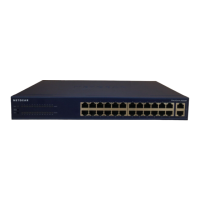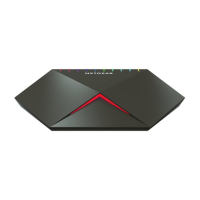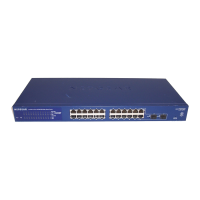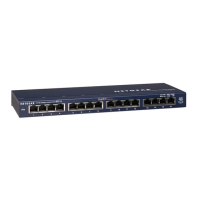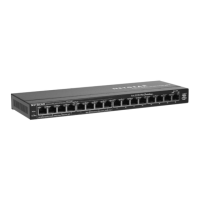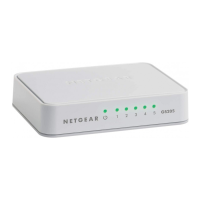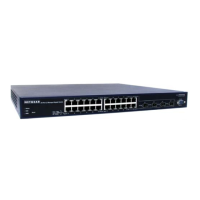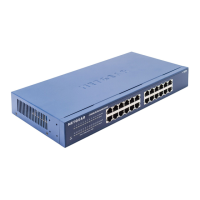Configuring Switching
150
S3300 Smart Managed Pro Switch
Protocol-Based VLAN Group Configuration
Protocol-based VLAN can be used to define filtering criteria for untagged packets. By default,
if you do not configure any port (IEEE 802.1Q) or protocol-based VLANs, untagged packets
are assigned to VLAN 1. You can override this behavior by defining either port-based VLANs
or protocol-based VLANs, or both. Tagged packets are always handled according to the IEEE
802.1Q standard, and are not included in protocol-based VLANs.
If you assign a port to a protocol-based VLAN for a specific protocol, untagged frames
received on that port for that protocol are assigned the protocol-based VLAN ID. Untagged
frames received on the port for other protocols are assigned the port VLAN ID, either the
default PVID (1) or a PVID you have specifically assigned to the port using the Port VLAN
Configuration screen.
You define a protocol-based VLAN by creating a group. Each group has a one-to-one
relationship with a VLAN ID, can include one to three protocol definitions, and can include
multiple ports. When you create a group, you choose a name, and a group ID is assigned
automatically.
To configure a protocol-based VLAN group:
1. Select Switching> VLAN > Advanced > Protocol-Based VLAN Group Configuration.
2. In the Group ID field, specify a unique number used to identify the group.
3. In the Group Name field, specify a name to identify the group.
You can enter up to 16 characters.
4. In the Protocol field, specify the protocol or protocols to use as the match criteria to
determine whether a particular packet belongs to the protocol-based VLAN.
The protocols you specify are checked against the 2-byte EtherType field of ingress
Ethernet frames on the PVBLAN group interfaces. When adding a protocol, you can
specify the EtherType hex value or (for IP, ARP, and IPX) the protocol keyword.
5. In the VLAN ID field, specify the VLAN ID to associate with the protocol-based VLAN.
All the ports in the group will assign this VLAN ID to untagged packets received for the
protocols you included in this group.
The Ports field displays all the member ports that belong to the group.
6. Click the Add button.
To modify protocol-based VLAN information:
1. Select the check box next to the protocol-based VLAN to update.
2. Specify the desired value in the available fields.
3. Click the Apply button.
To delete a protocol-based VLAN group:
1. Select the check box next to each protocol-based VLAN to remove.
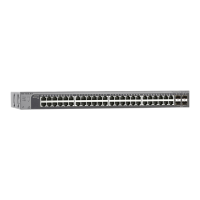
